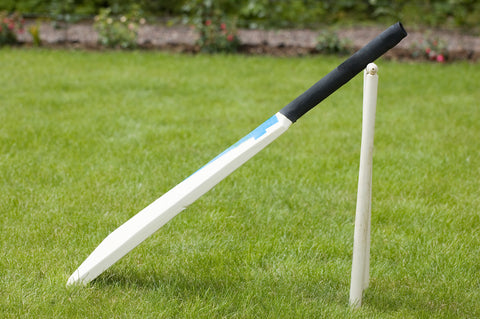The Science Behind Cricket Bats
It has long been known that cricket bats play a major role in the outcome of a cricket match. With the proper bat, players can send the ball soaring over the boundary for six runs. But what factors determine how well a bat will perform?
In this blog post, we will take a look at the science behind cricket bats and how it affects their performance. We will also discuss some of the newer technologies that are being used to make cricket bats more efficient. So if you're curious about how cricket bats work, keep reading!
1. Bat Weight

One of the most important factors in a cricket bat's performance is its weight. Heavier bats tend to generate more power when hitting the ball, while lighter bats are more agile and can move faster. However, there is a trade-off between weight and power too heavy a bat will reduce the player's swing speed, while too light a bat will not generate enough power. As a result, finding the right balance is crucial for getting the most out of a cricket bat.
2. Bat Length

The length of a cricket bat also affects its performance, but in this case the effect is more subtle. Shorter bats are easier to control and swing faster due to their lighter weight, while longer bats generate more power as they have a larger surface area on which to strike the ball with force. However, there is no perfect length for all players; what works best will depend largely upon personal preference and style of play (e.g., fast bowlers tend toward shorter blades).
Read More About: The Right Way To Hold A Cricket Bat When You Strike The Ball: 5 Tips
3. Bat Shape

The shape of a cricket bat has an effect on its performance as well. Rounder bats have more surface area for hitting the ball, which leads to greater power and control over where it goes when struck by a player's swing. Flatter bats are lighter and easier to wield but lack some of the same power potential; they also produce less friction with air resistance when swung at high speeds, making them better suited for short-distance runs or defensive play.
4. Bat Stringing

The way in which a cricket bat is strung can also have an impact on its performance. Tightly-strung bats tend to be more responsive and generate more power when hit, while loosely-strung bats are easier to control but don't pack as much of a punch. It's up to the player to find the right balance between these two extremes that suits their individual playing style.
In recent years, bat manufacturers have been using new technologies to improve the performance of cricket bats. One such technology is called 'pre-cured' or 'pre-treated' timber, which involves treating the wood with a resin before it is shaped into a bat. This makes the wood stronger and more durable, allowing for longer use and better performance over time.
Read More About: The 5 Key Components Of A Cricket Ball
5. Bat Grips

Another recent development in cricket bat technology is the use of grip pads. These are small pieces of foam or rubber that are attached to the handle of the bat in order to provide a better grip and prevent slippage. This is especially useful in wet conditions, when the player's hands may be sweaty and the bat more likely to slip out of their grasp.
So there you have it! The science behind cricket bats explained. Now you know what goes into making a good cricket bat and why some perform better than others. Keep this information in mind next time you're shopping for a new cricket bat, and see how it can help improve your game!
Conclusion:
The science behind cricket bats is quite complex, but it boils down to five key factors: weight, length, shape, grip and stringing. The right combination of these four elements will make for an effective bat that performs well under pressure and helps you win games! Take note of these details when choosing your next cricket bat so that you can select one which suits both your playing style in Australia and your budget.
